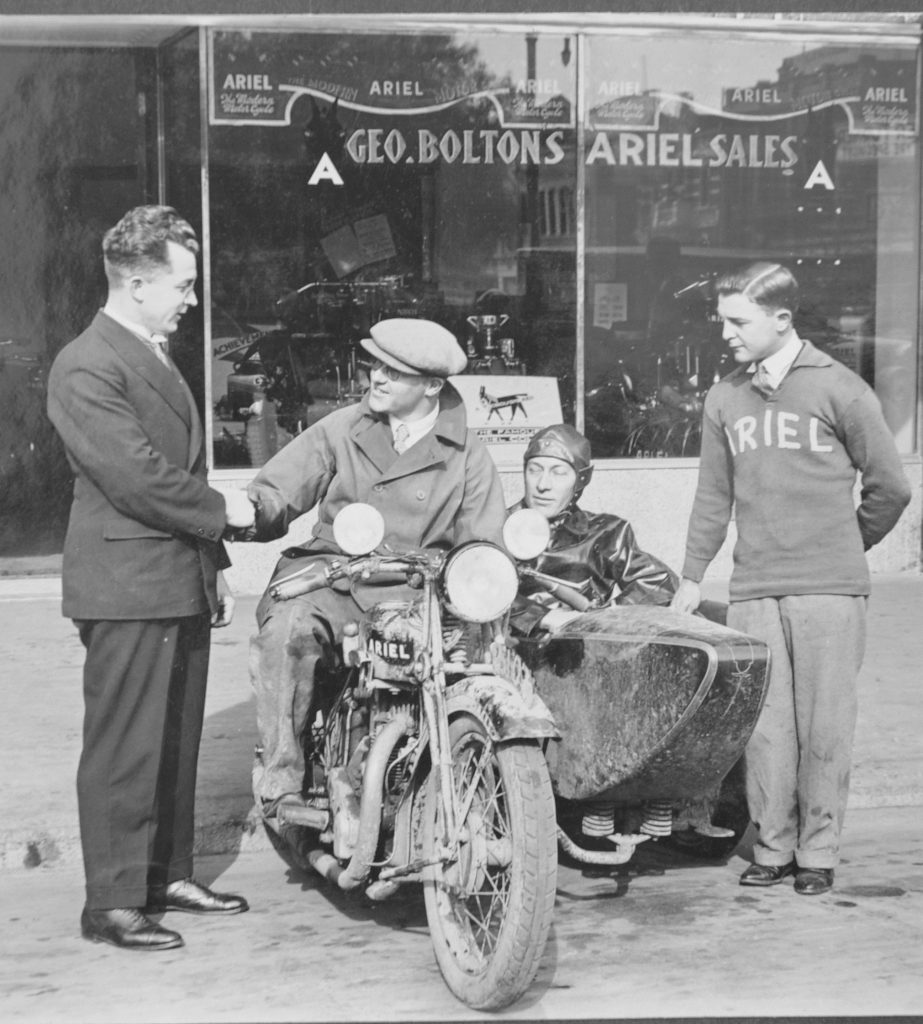The year was 1928 when, with very little fanfare, the Great South Road out of Sydney and the Sydney Road out of Melbourne was designated the Hume Highway – a now defined thoroughfare serving over 40 towns along its 560-mile length. Mittagong, Goulburn, Yass, Gundagai, Tarcutta, Albury, Wangaratta and Euroa were all major centres of commerce built along the highway. Any record attempt was easily foiled by the local wallopers stopping riders for enough time to impede any chance of success. At the time Adelaide was Australia’s third largest city though somewhat isolated by the combination of the Ninety Mile Desert and the Coorong wetlands.
The pioneers of the 596 mile Adelaide to Melbourne journey were Messrs Thomson and Day driving a 6hp de Dion Bouton. Theirs was a leisurely five-day trip in 1903 but proved the Coorong could be traversed without horses. In October 1919, L G Cherry, with D Cunningham in the sidecar of his Harley-Davidson, left Adelaide intent on establishing a record time for the journey. Cherry had made the attempt twice before and had been defeated by the weather. This time they reached Wellington on the Murray River in the respectable time of two hours and took the punt to the other side. But just a mile down the road to Meningie, the outfit failed to take a sharp right hand bend and overturned, killing Cherry and critically injuring Cunningham.
The prolific Victorian record-breaker Harold ‘Ranji’ Parsons had no such problems on his solo effort in 1920, setting the mark at 19 hours and twenty minutes on a Harley-Davidson. Then, in 1922, Carl Korner and Archie Smith aboard a Harley-Davidson 7.9hp outfit set a time of 17 hours 23 minutes and 45 seconds. For some strange reason the Croweaters insisted on recording times to the second, though the elapsed times always varied by hours.
Publicity for intercity records was on the wane, but in 1928 the enthusiasm of Adelaide Ariel Distributor George Bolton caused a flurry of record attempts across the dreaded Coorong. For six years the record had been held by Carl Korner and Archie Smith, then Frank Barr rode back-to-back trips, leaving Adelaide on a Harley outfit with a Mr Webb as navigator, then returning on a Harley solo with a new record of barely more than 16 hours.
Come January 1930, George Stapleton and Howie Smith on a 3½hp Ariel Charger with a Goulding ‘Comfit’ sidecar broke Korner’s record by 23 minutes, whereupon George Bolton claimed the record for Ariel (even though Frank Barr’s solo time was quicker). So, just to ensure there was no confusion, Bolton threw Stapleton on to a 1933 Ariel Red Hunter. Stapleton surveyed the route across to Melbourne then returned to Adelaide in 14 hours and 36 minutes. Three weeks later Barr responded with a time of 13 hours and 17 minutes. After that both he and Stapleton ceased the tit-for-tat which, thanks to Bolton’s publicity machine, Barr was never going to win.
Then in 1935 Messrs Drinkwater and Lohmer on an Ariel Red Hunter with Dusting sidecar claimed the record for the Victorians for the first time since 1921. Their time was an amazing 13 hours and 19 minutes, which cut almost three hours off the sidecar record and half an hour off the solo record; thus terminating the Barr-Stapleton brawl for all time. And with it the publicity given to pure speed records. Now it was reliability, fuel consumption and durability feats that rose to prominence in distributors’ continuing hyperbole. Image: George Bolton, Adelaide Ariel Distributor (left) was an avid sponsor of record attempts.

Image: George Bolton, Adelaide Ariel Distributor (left) was an avid sponsor of record attempts.











